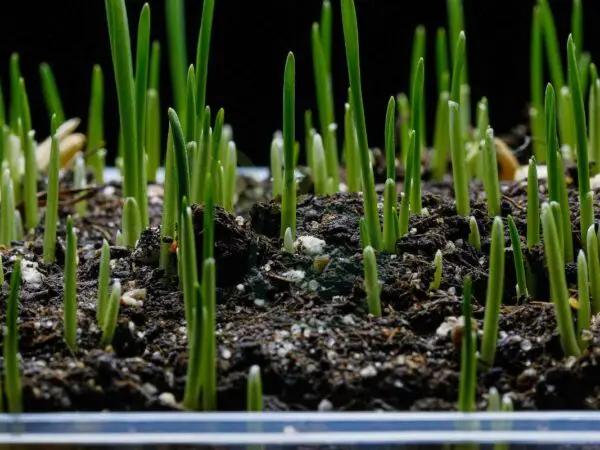Looking to achieve a lush green lawn? Knowing the best time to plant grass seed is crucial. Timing matters for optimal growth and a healthy lawn. By understanding historical weather patterns in your region, you can determine the ideal planting window. Planting during the early fall or spring ensures favorable conditions for germination and root development. Keep in mind that different grass types may have specific planting preferences, so research your grass variety before sowing. Stay ahead of the game with this guide on when to plant grass seeds for a vibrant and thriving lawn.
Key Takeaways
- Timing is Key: Planting grass seed at the right time of the year can significantly impact the success of your lawn growth.
- Seasonal Strategies: Tailor your seeding approach based on the specific requirements and challenges of each season: spring for optimal growth, summer for extra care, fall for root development, and winter for cool-season grasses.
- Prepare the Soil: Prior to planting, ensure proper soil preparation by removing debris, loosening the soil, and adding necessary nutrients for healthy grass growth.
- Seed Selection Matters: Choose the right type of grass seed that suits your climate, soil type, and desired lawn characteristics for the best results.
- Consistent Maintenance: Regular watering, mowing, and fertilizing are crucial for nurturing newly planted grass seed and maintaining a lush lawn over time.
- Maximize Timing Benefits: By planting seeds at the best time and aligning your grass seed planting with the seasons and following proper maintenance practices, you can achieve a vibrant and healthy lawn all year round.
Understanding Grass Seed Timing
Climate Factors
When planting grass seed, consider the temperature variations in your region for the best time. Note the average rainfall levels for proper growth. Understand how climate factors impact seeding success.
Soil Conditions
Test soil to determine pH and nutrient levels. Ensure proper drainage to prevent waterlogging, hindering germination. Address soil compaction issues before planting for optimal growth.
Grass Species
Choose grass species to plant based on warm or cool season preferences and time. Consider shade tolerance and water requirements when selecting species. Understand different grass characteristics for an informed decision.
Spring Seeding Essentials
Early Spring Guidelines
Begin preparing your lawn for seeding as soon as the early spring months arrive to plant new grass seeds. Follow recommended guidelines for planting cool season grass seed during this period. It's crucial to implement proper watering and maintenance practices to support seed germination effectively.
Late Spring Tips
Utilize late spring as a favorable time for warm season grass seed planting. Monitor weed growth diligently during this period and take necessary actions to control them promptly. Adjust watering schedules based on the weather conditions to promote healthy grass growth without overwatering.
Summer Seeding Strategies
Early Summer Periods
Planting grass seed during early summer requires caution due to extreme heat. If you opt to plant warm season grass seed, ensure proper irrigation to support growth. Evaluate the dormancy patterns of cool season grass before seeding.
Mid-Summer Care
In mid-summer, prioritize maintaining existing lawns over starting new seeding projects. To avoid stressing established grass in hot temperatures, focus on adequate watering practices. Utilize fertilizers tailored for summer lawn care maintenance.
Fall Planting Advantages
Cool-Season Benefits
Cool-season grasses have advantages when planted in the fall. They thrive in cooler temperatures, making them ideal for moderate climates. Align your seeding schedule with these benefits.
These grass varieties can withstand frost and establish strong root systems during the fall season. The cooler weather reduces stress on the newly planted seeds, promoting healthy growth. With proper care, cool-season grasses can develop into lush lawns before winter sets in.
Mid-Autumn Tips
For successful mid-autumn planting, ensure the soil is prepared by removing debris and weeds. Keep the soil moist but not waterlogged to aid seed germination. Consider overseeding existing lawns to plant and fill in bare patches and improve overall lawn density.
Winter Seeding Possibilities
Preparing for Dormant Seeding
Winter seeding offers unique advantages for establishing a lush lawn by planting. Ensure the soil is well-prepared by removing debris and weeds beforehand. Opt for high-quality grass seed suitable for dormant planting to ensure successful growth.
In late fall, it's crucial to start preparing your lawn for winter seeding. Rake the soil lightly to create a conducive environment for seed germination. Consider overseeding areas with sparse grass coverage to promote a thick and healthy lawn.
Winter Care Tips
During winter, proper care is essential to support the growth of newly planted grass seeds. Water the seeded areas regularly, ensuring they remain moist but not waterlogged. Mowing should be avoided during this period to prevent damage to delicate young sprouts.
Applying a layer of mulch over newly seeded areas can help retain moisture and protect the seeds from harsh winter conditions. Consider using straw or specialized mulch products designed for winter seeding projects.
Maximizing Timing Benefits
Ideal Seeding Times
Planting grass seed at the proper timing is crucial for successful growth. The best time to plant grass seed is in the early fall or spring. These seasons offer optimal conditions for germination and establishment.
During the early fall, the soil is still warm from summer, promoting rapid seed germination. Cooler temperatures reduce the risk of heat stress on young grass plants. Spring seeding allows grass to establish before the hot summer months arrive.
Unfavorable Times
Avoid planting grass seed during extreme weather conditions such as winter or summer. Winter seeding may result in poor germination due to cold soil temperatures and frost heaving. Summer seeding exposes young grass plants to high temperatures and drought stress.
Seeding during winter can lead to seeds being washed away by rain or snowmelt, hindering growth. Similarly, summer seeding requires frequent watering to keep the soil moist, which can be challenging during hot weather.
Soil Preparation Techniques
Testing Soil
Testing your soil before planting grass seed is crucial for a successful lawn. It helps determine the pH level, nutrient content, and soil structure. By conducting a soil test, you can identify deficiencies and adjust them accordingly.
Soil tests are typically done using DIY kits or by sending samples to a lab. These tests reveal essential information such as the soil's acidity level and nutrient composition. They provide valuable insights into what amendments are needed for optimal grass growth.
Enhancing Soil
Enhancing your soil can significantly improve the chances of your grass seed thriving. One effective method is adding organic matter like compost to increase nutrients and improve drainage. This creates a healthy environment for seeds to germinate.
Another way to enhance soil quality is through a process called aerating. This involves perforating the soil with small holes to allow air, water, and nutrients to penetrate deep into the ground. Aerating promotes root growth and overall turf health.
Selecting the Right Grass Seed
Cool vs Warm Season
When choosing grass seed, consider whether you live in a region with cool or warm seasons. Cool-season grasses thrive in northern climates and are ideal for areas with cold winters.
Warm-season grasses, on the other hand, are best suited for southern regions with hot summers and mild winters. Each type has specific characteristics that cater to different climate conditions.
Shade Tolerance
Shade tolerance is crucial when selecting grass seed for your lawn. Some varieties, like fine fescues, excel in shady areas where sunlight is limited.
In contrast, other types such as Bermuda grass prefer full sun exposure to grow healthily. Assess the amount of shade your lawn receives before choosing the right seed variety.
Maintenance for Growth Success
Watering Practices
Proper watering is crucial for the successful growth of your grass seed. Ensure the soil remains consistently moist but not waterlogged. Over-watering can lead to root rot and hinder development.
It's essential to water deeply but infrequently, encouraging deep root development. Early morning watering is ideal as it allows the grass to absorb moisture before evaporation occurs during the day.
Fertilizing Tips
To promote healthy growth, consider using a high-quality fertilizer specifically designed for new grass seed. Look for products with a balanced nutrient ratio suitable for the establishment phase.
Avoid fertilizers high in nitrogen during the initial stages as they can burn delicate young roots. A slow-release fertilizer can provide continuous nourishment over an extended period, supporting steady transition from seedling to mature grass.
Summary
You now grasp the importance of planting grass seed at the right time. From spring to winter, each season offers unique advantages for successful growth. By understanding the nuances of timing, soil preparation, seed selection, and maintenance, you can optimize your lawn's health and appearance year-round. Remember, the key lies in aligning your efforts with nature's rhythms to achieve the best results.
So, go ahead and apply these insights to your lawn care routine. Experiment with different timings and techniques to see what works best for your specific conditions. Your lush, vibrant lawn awaits!
Frequently Asked Questions
When is the best time to plant grass seed?
The best time to plant grass seed depends on the season. Spring and fall are generally ideal for planting grass seed as the weather conditions are favorable for germination and growth.
How important is soil preparation before planting grass seed?
Soil preparation is crucial as it ensures proper nutrient availability, drainage, and aeration for optimal grass growth. It helps create an ideal environment for the seeds to establish strong roots and thrive.
What factors should I consider when selecting the right grass seed?
Consider factors like your region's climate, sunlight exposure in your lawn, soil type, foot traffic levels, and desired aesthetics. Choosing the right grass seed variety tailored to these factors will result in a lush and healthy lawn.
Is maintenance essential after planting grass seed?
Yes, regular maintenance such as watering, mowing at the correct height, fertilizing appropriately, and controlling weeds is crucial post-seeding. Proper maintenance supports healthy growth and ensures your new lawn flourishes.
Can I plant grass seed during winter months?
While winter seeding is possible in some regions with mild climates or using specialized cold-tolerant seeds, it's generally not recommended due to challenging conditions. Optimal germination occurs during spring or fall when temperatures are more conducive to growth.
Image Source: Paid image from CANVA



